SAN
DIEGO,
CA — I have begun research on what I expect will be my next book, dealing
with the lives and times of Joseph S. Mannasse and Marcus Schiller, pioneer
merchants and city-builders of 19th Century San Diego. It's the kind of
routine one can enjoy. I hop into my quiet car (afterall, the license
plate says B'Shalom, meaning "in peace") and I navigate my
way to Balboa Park via University Avenue where bridge lovers like myself can
see a classic just beyond the intersection of Florida Street. Thence it
is to Balboa Park, where the scenery is always changing and ever-interesting.
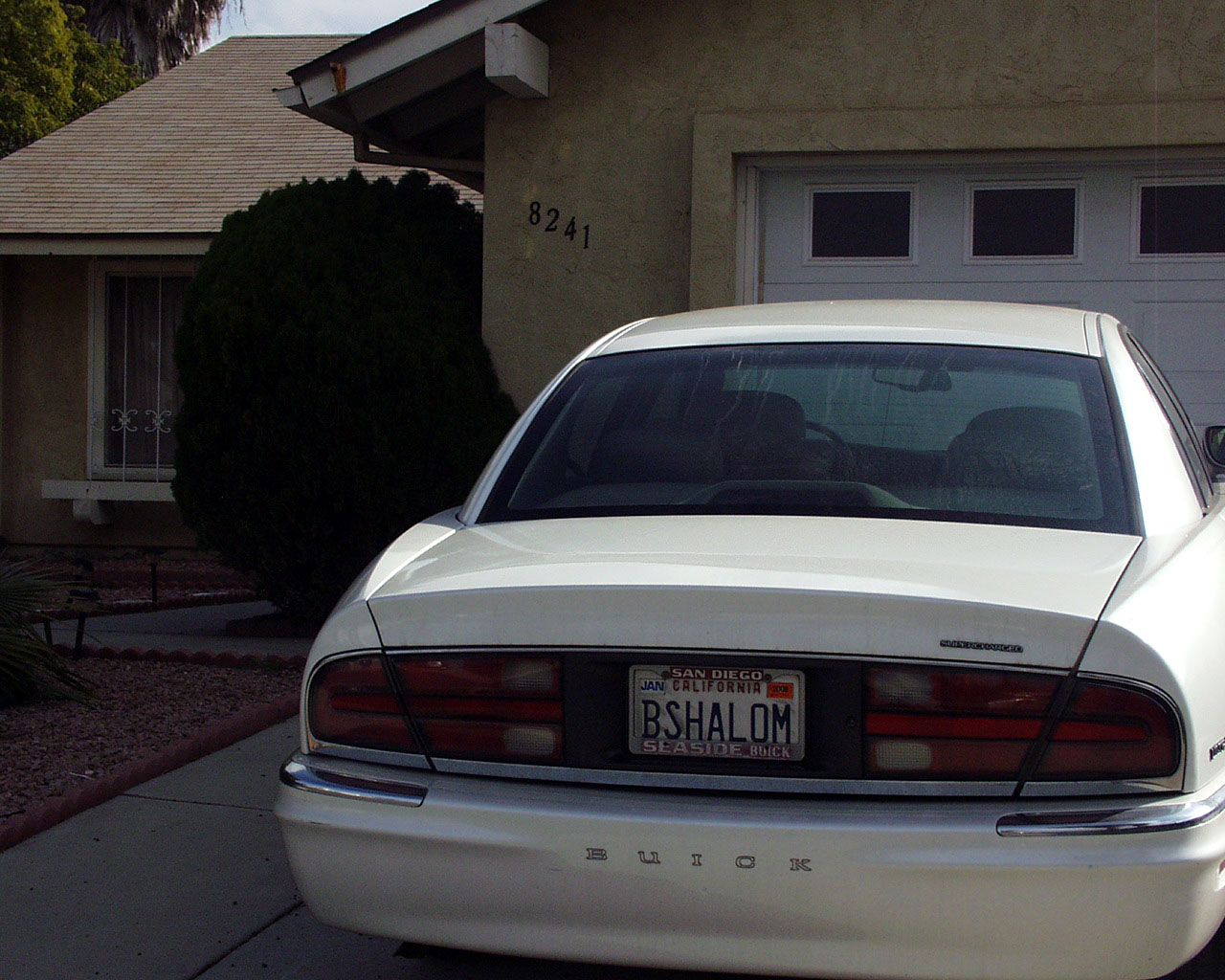



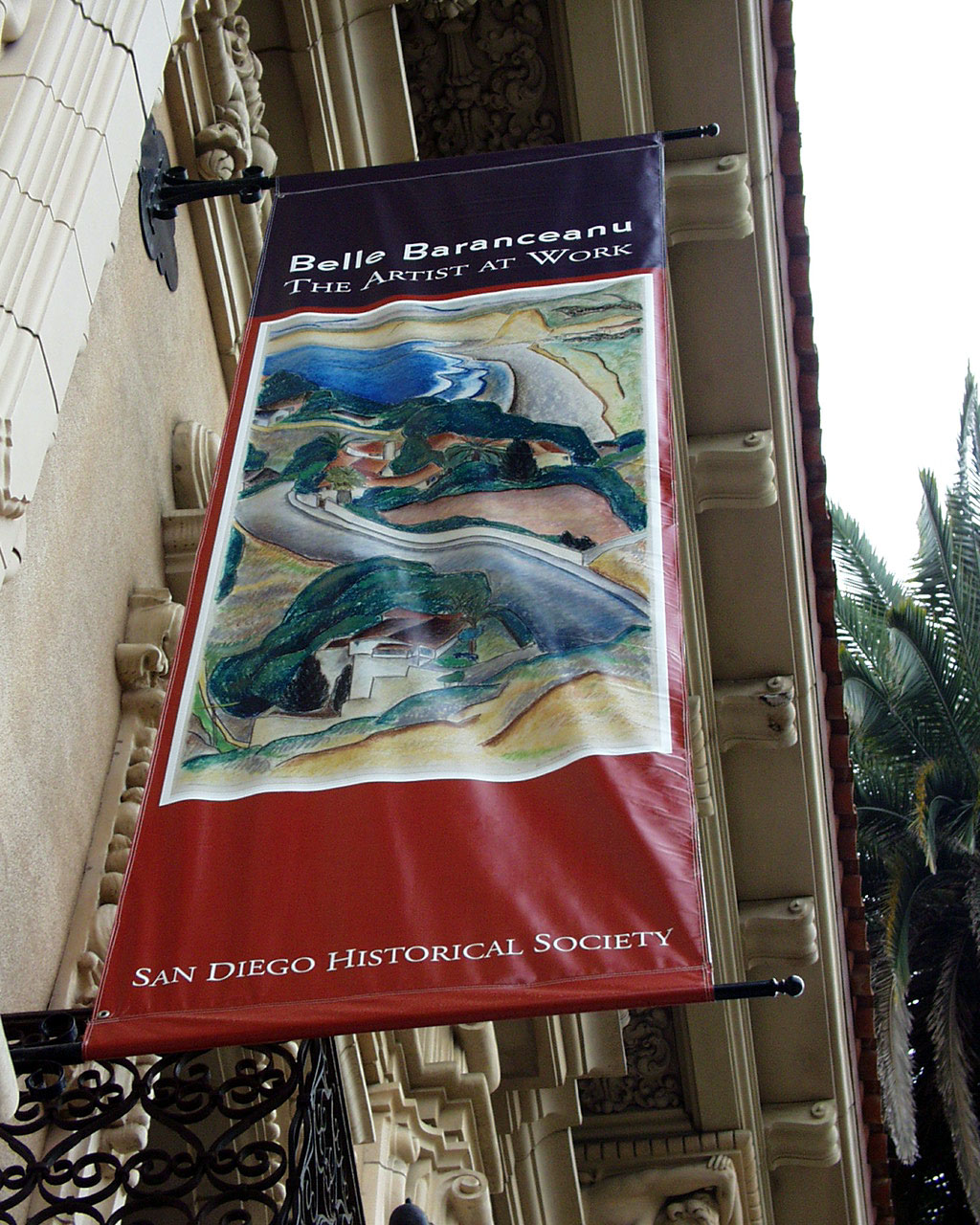
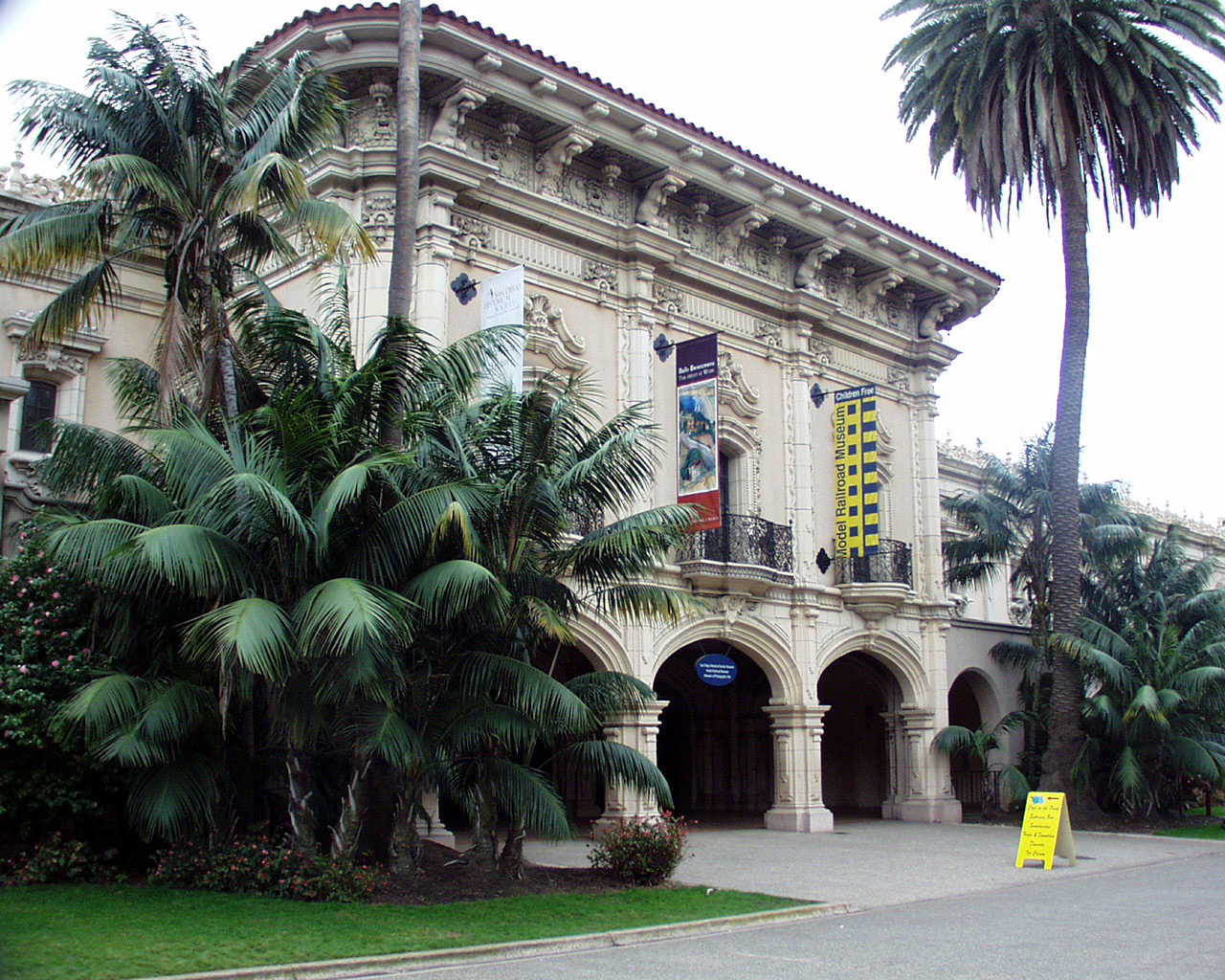
Commuting to Balboa Park— In the peace-mobile, I head
down University Avenue, turning before the cool
bridge, and, if possible, park somewhere close to the landmark fountain, which
today pranksters apparently
had filled with laundry soap, it was so sudsy. A short walk takes one to
the east entrance of the Casa de
Balboa, where a sign tells of the museums inside. At the main entrance around
the corner, a banner for the
exhibition of works by Belle Beranceanu was too colorful not to catch the
eye. The archives of the Museum
of San Diego History are located on the basement floor, which it shares with
the Model Railroad Museum.
Today, for example, some prankster must have dumped laundry
detergent into the park's signature fountain located off Park Boulevard
between the Natural History Museum and the Reuben Fleet Science Center.
The short walk to the Casa de Balboa was rewarded with a banner for the
current exhibit at the Museum of San Diego history featuring the art works of
Belle Beranceanu. Then, it was down to the archives, where I had done a
considerable amount of research for the book I wrote about Louis Rose. Using
the key word Mannasse, I found that there were 72 collections of documents in
which his name appears. Most of these are the records and papers of J.S.
Mannasse's contemporaries, but one proved to be a box of Mannasse's own
correspondence. That box alone will keep me busy for many hours.
As always, Jane Kenneally, the head archivist, was helpful, as was Carol
Myers, who, though assigned to the photo archives, is ready to assist in the
document archives as well.
While in the archives, I chatted with Professor Iris
Engstrand of the University of San Diego, who, with her students, was
researching a project for the San Diego Bar Association . Also, I saw
Linda Canada, who was researching something that we didn't discuss because it
might come before me in my capacity as a member of the City of San Diego's
Historical Resources Board. Instead, we chatted about another project in which
she is involved: creating a photographic timeline of Jewish San Diego for
Jewish Family Service.
Before I knew it, the half hour of 4:30 p.m. had arrived, when the archives
close. I returned home via State Highway 163, passing under another
favorite bridge—the Cabrillo Bridge, which leads from 6th and Laurel into
Balboa Park—and endured rush traffic on the eastbound Interstate 8,
especially near the interchange with Interstate 805.
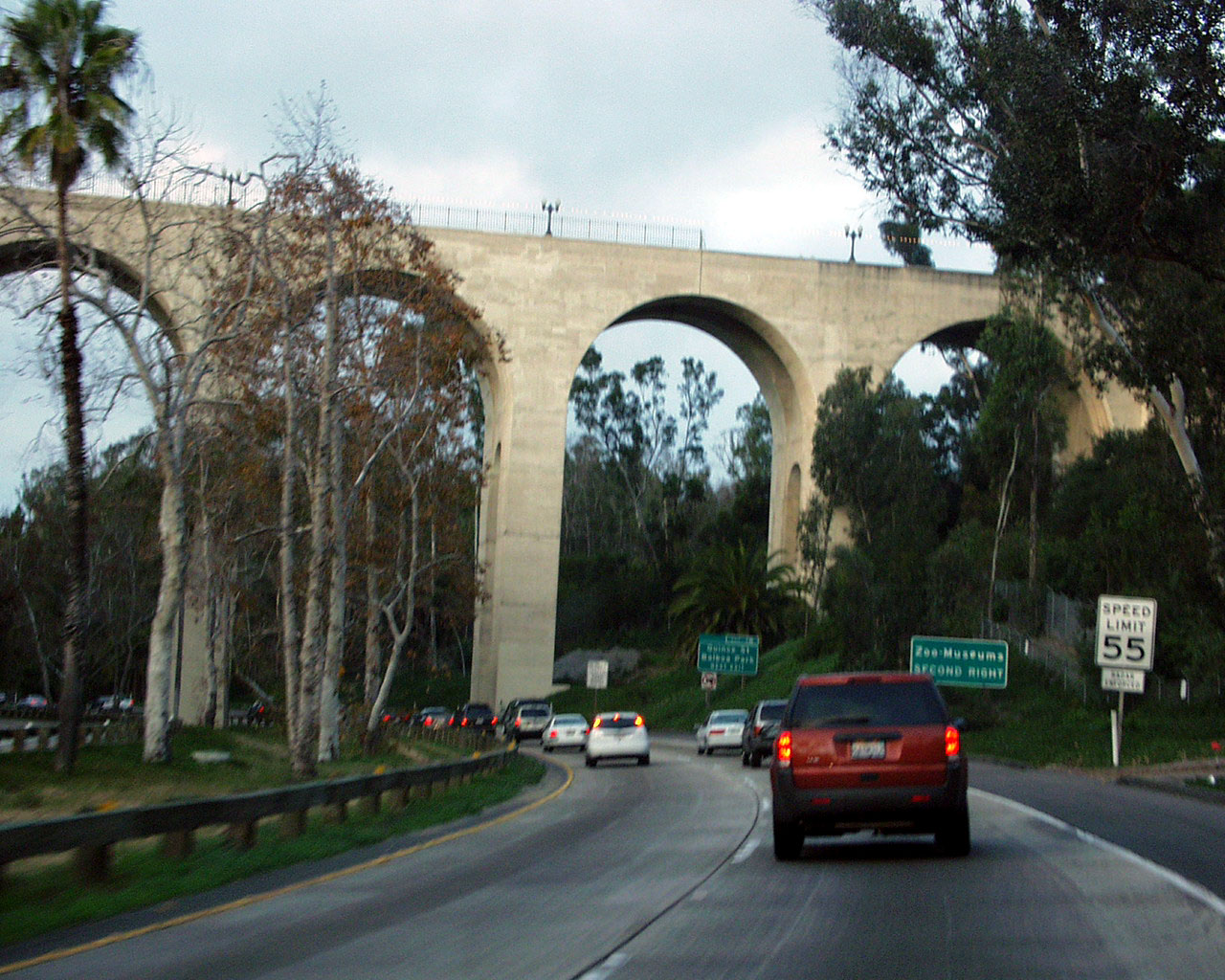

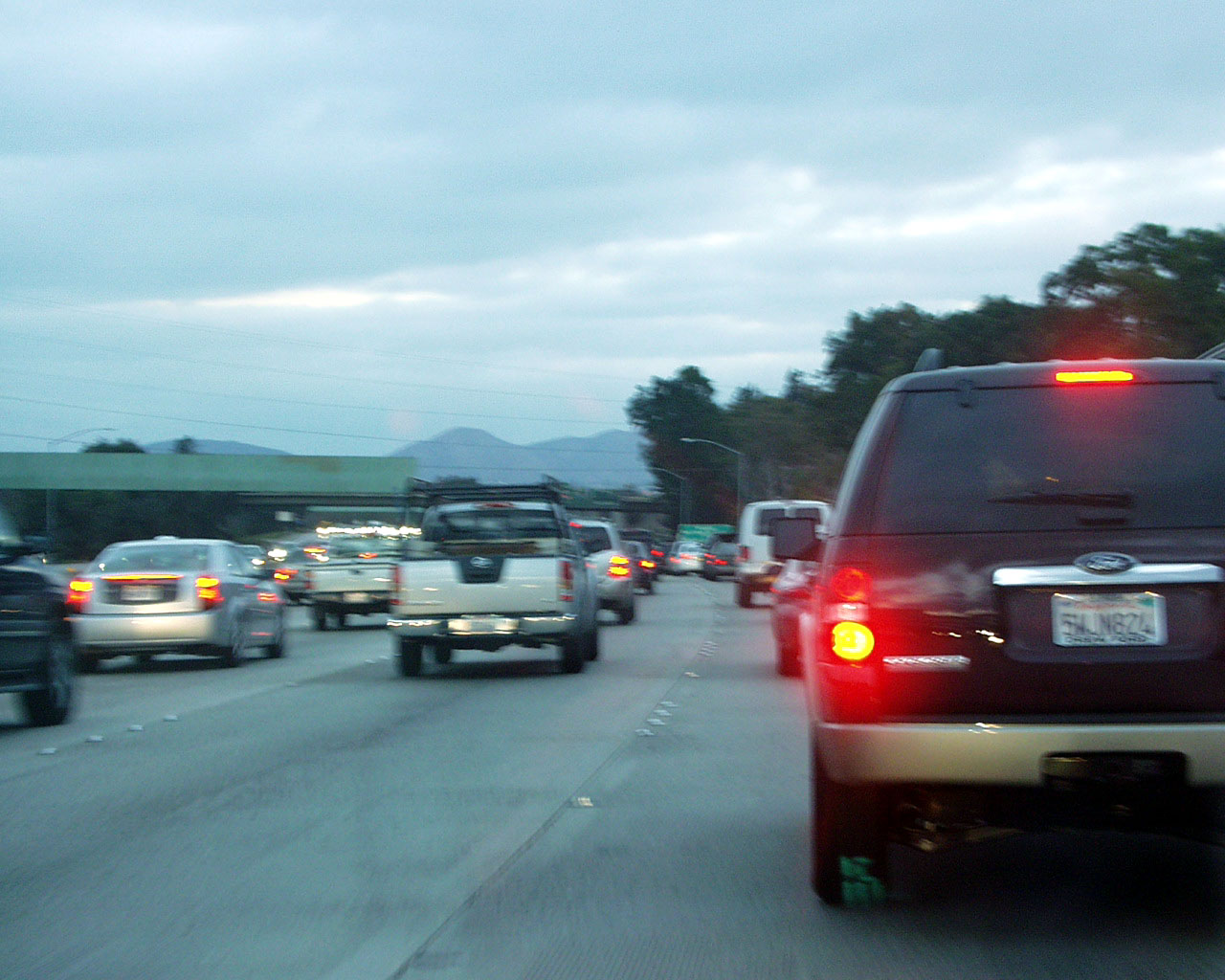
Afternoon commute—It's a pleasure on the northbound State
163, especially under the Cabrillo Bridge, but
the eastbound Interstate 8 is a freeway of a different tenor. Although
standing in traffic does permit one to
safely photograph the I-8/I-805 Interchange at the Jack Schrade Bridge, the
ride has plenty of brake lights.

